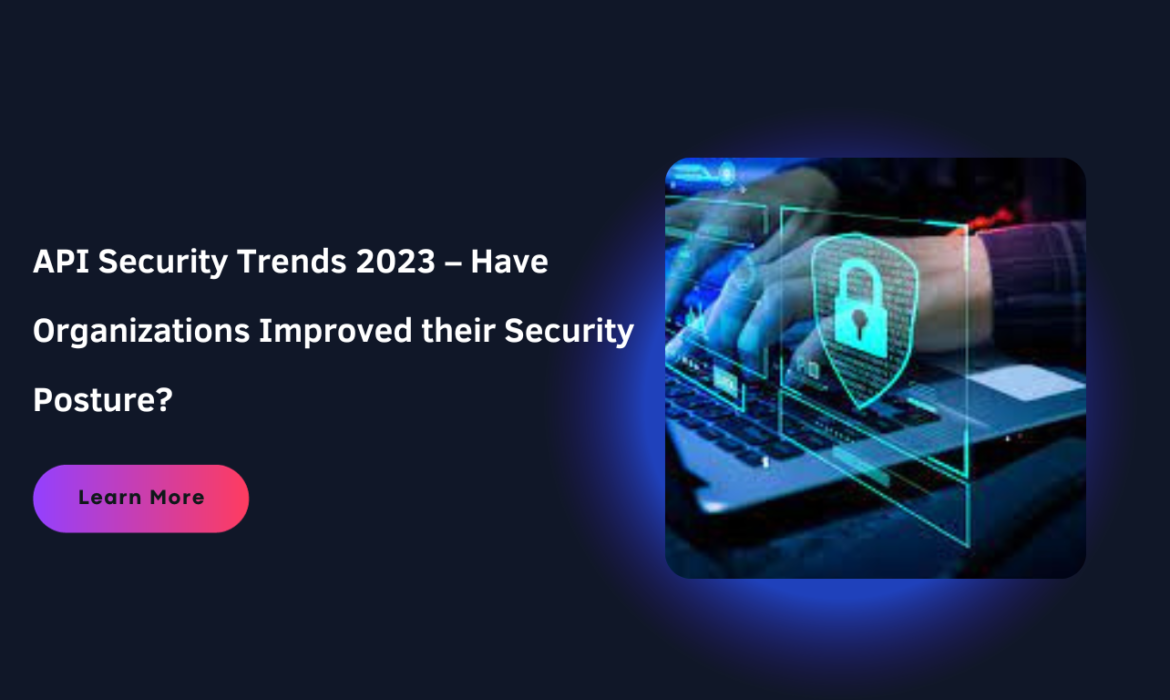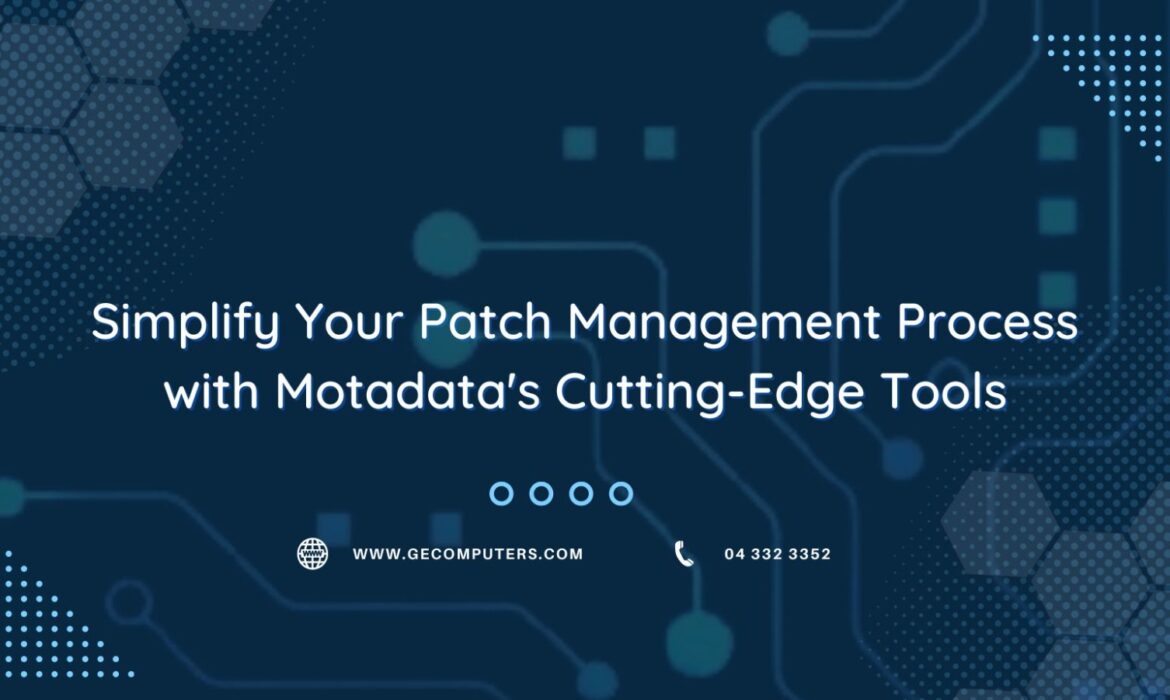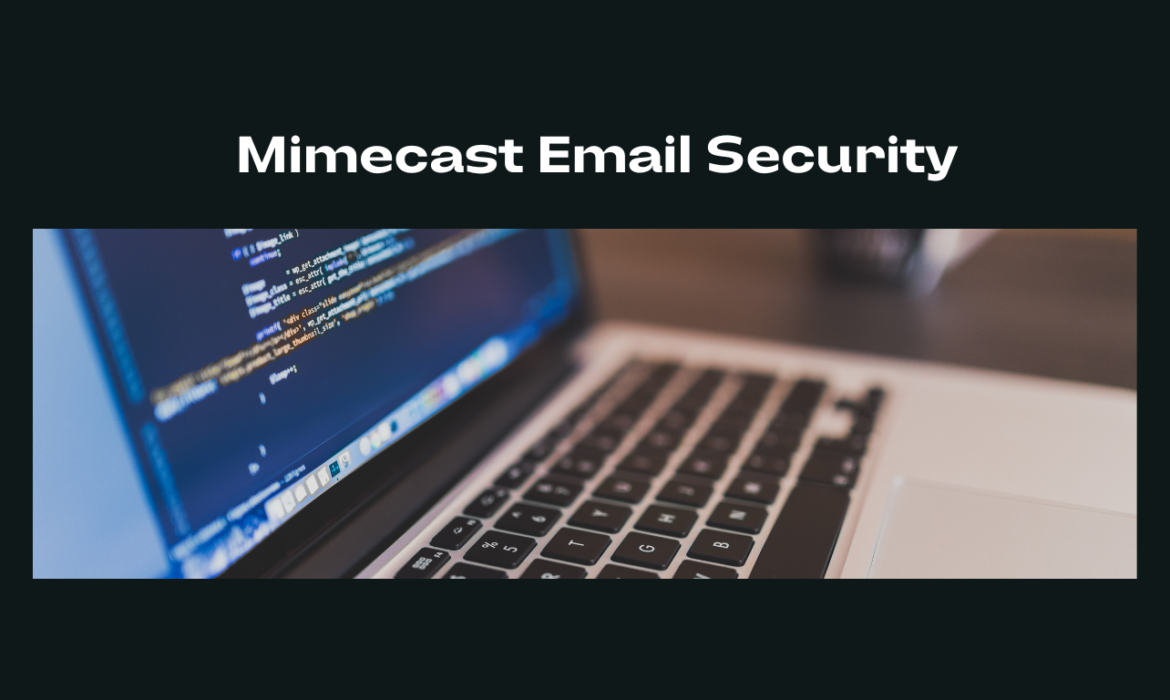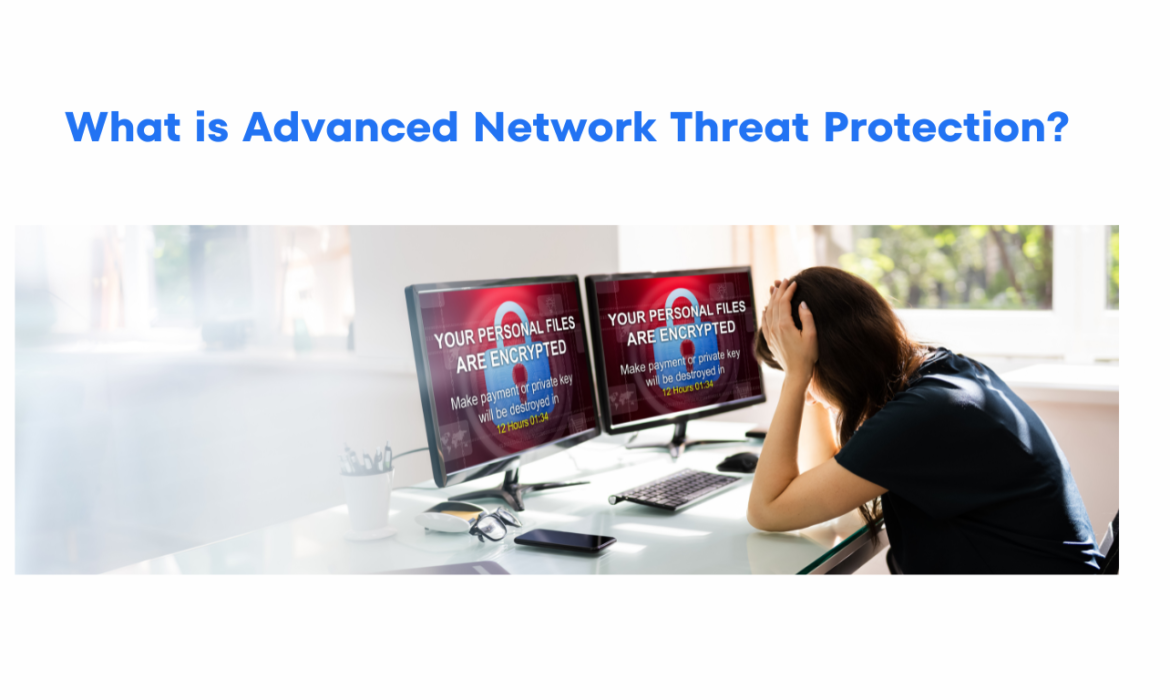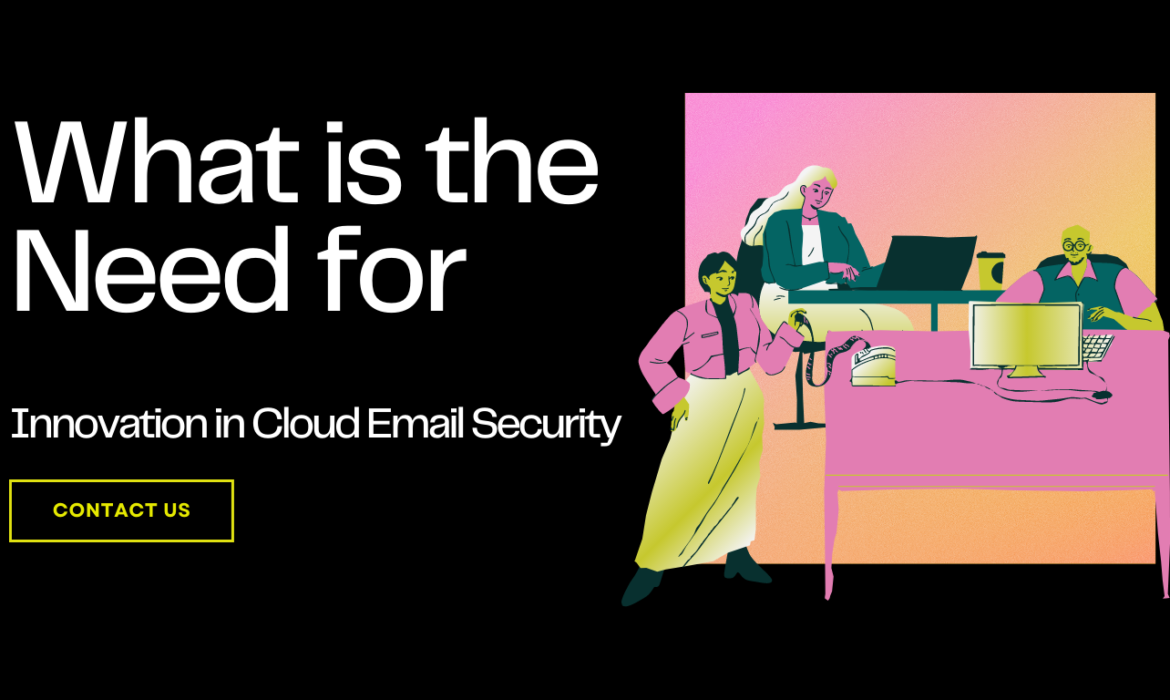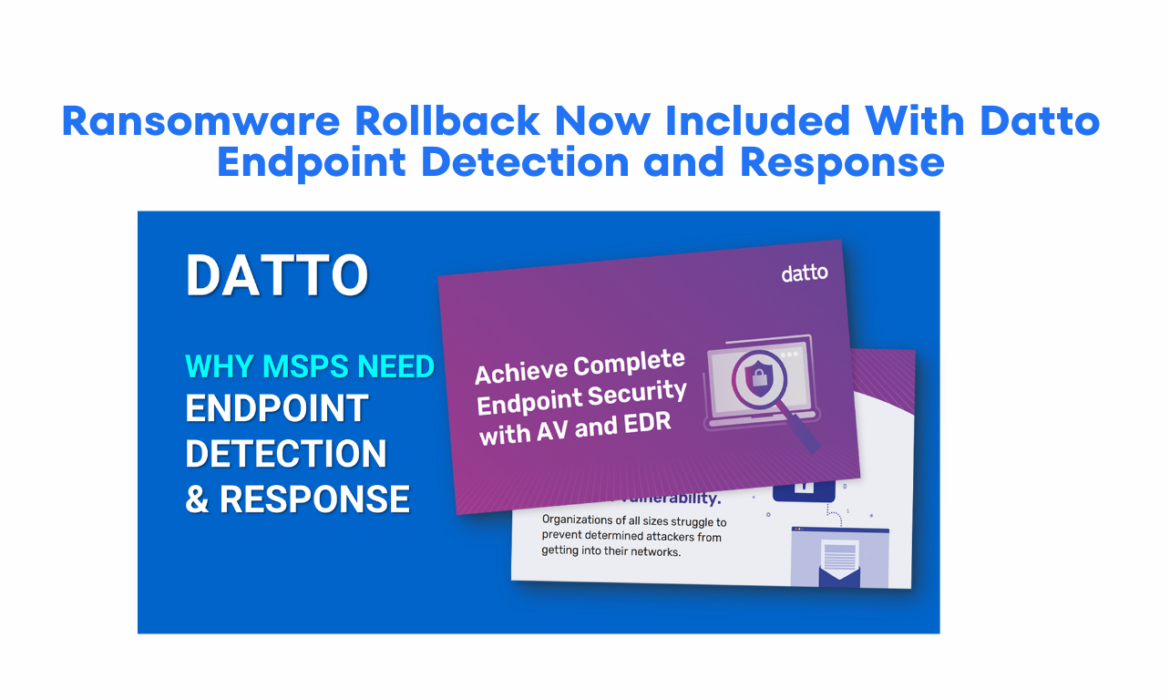API Security Trends 2023 – Have Organizations Improved their Security Posture?
Looking for the best API Security Trends? APIs, stands for application programming interfaces. It serves as the spine of modern software applications, allowing seamless communication and data exchange between various methods and platforms. They offer developers with an interface to interact with outer services, permitting them to incorporate various functionalities into their own apps.
Surprisingly, this boosted reliance on APIs has also created them attractive targets for cybercriminals. In the past couple of years, the increase of API breaches has evolved as an increasing concern in the world of cybersecurity. One of the major causes behind the increase of API breaches is insufficient security standards executed by developers and organizations. Multiple APIs are not secured properly, which further leave them vulnerable to attacks.
However, hackers have created refined strategies that precisely target flaws within APIs. For example, they can take advantage of malicious code injections into requests or manipulate comebacks from an API endpoint to achieve unauthorized access or extract confidential information about users.
Increase of API breaches
The results of an API breach can be equally painful for both businesses and consumers alike. Companies may encounter financial losses because of legal liabilities and reputational damage caused by leaked customer information or disrupted services. Customers risk having their personal data disclosed, which can further lead to identity theft or other frauds.
For these causes, securing API security or API Security Trends are necessary due to the connected nature of modern software ecosystems. Many businesses depend on third-party integrations and microservices architecture where numerous APIs interact with each other. If a single API in this intricate network gets breached, it can create opportunities for attackers to exploit weaknesses in interconnected systems.
78% of cybersecurity professionals have faced an API security incident in the past year! How does your industry fare? Find out in our new whitepaper: Many businesses often depend on their current systems, such as API gateways and web application firewalls (WAFs), to safeguard their APIs. However, putting all your faith in these technologies alone can create vulnerabilities in your API security. Here are some reasons why API gateways and WAFs alone fall short:
1. Lack of granular access control:
While API gateways provide necessary authentication and authorization abilities, they don’t provide fine-grained access control necessary for complicated scenarios. APIs often require more sophisticated controls based on factors such as user roles or specific resource permissions.
2. Inadequate protection against business logic attacks:
Traditional WAFs primarily focus on protecting against ordinary vulnerabilities like injection attacks or cross-site scripting (XSS). However, they may ignore potential risks linked with business logic faults specific to an organization’s unique application workflow. Protecting against such attacks demands a deeper knowledge of the underlying business operations and executing tailored security measures within the API code itself.
3. Insufficient threat intelligence:
Both API gateways and WAFs depend on predefined rule sets or signatures to catch known attack patterns effectively. However, arising threats or zero-day vulnerabilities might bypass these preconfigured defenses until new rules are edited by vendors or manually implemented by developers/administrators.
4. Data-level encryption limitations:
While SSL/TLS encryption is crucial during data transmission between clients and servers through APIs, it does not always protect data at rest within the backend systems themselves nor guarantee end-to-end encryption throughout the entire data flow pipeline.
5. Vulnerability exploitation before reaching protective layers:
If attackers discover a vulnerability in the APIs before the traffic goes through the API gateway or WAF, they can exploit it directly without being caught by these security measures.. This emphasizes the need for robust coding practices, secure design principles, and software tests that identify vulnerabilities early on.
6. Lack of visibility into API-specific threats:
API gateways and WAFs may not provide detailed insights into attacks targeting specific API behaviors or misuse patterns. To spot unusual things like too many requests in a short time from one user or unexpected attempts to get data, you need special tools and methods made just for keeping an eye on API problems closely.
Also Read: How to find the best cybersecurity consulting companies in Dubai?
How organizations are addressing API security?
To get an idea of how many companies understand the exceptional security proposition that APIs present, we provide consultation to our clients. We help our customers with the API Security Trends and API security best practices. Our purpose is to help businesses that are worried about getting affected by API-specific attacks. Contact us at Green Edge Computers to know more.
All you need to know about Datto RMM
Datto RMM, or Datto Remote Monitoring and Management, is a comprehensive IT management and monitoring platform designed to help managed service providers (MSPs) and IT professionals efficiently oversee and maintain their clients’ IT infrastructure. It is part of the Datto family of products and services, which focuses on data protection, business continuity, and managed IT solutions. Here’s what you need to know about Datto RMM:
Remote Monitoring:
Datto RMM enables IT professionals to remotely monitor a wide range of devices, including servers, workstations, laptops, and network equipment. This monitoring encompasses various aspects of system health, such as hardware status, software updates, performance metrics, and security vulnerabilities.
Proactive Issue Detection:
The platform is designed to detect and alert IT teams to potential issues before they become critical problems. It provides real-time alerts and notifications, allowing technicians to address issues promptly, often before end-users even notice them.
Patch Management:
Datto RMM includes patch management capabilities that automate the process of applying software updates and security patches to devices. This helps keep systems up-to-date and secure, reducing the risk of vulnerabilities.
Automation and Scripting:
It offers automation features and scripting capabilities, allowing IT professionals to create custom scripts and automated workflows to streamline routine tasks and troubleshoot issues more efficiently.
Asset Management:
The platform provides tools for tracking and managing hardware and software assets across the network. This helps organizations maintain an accurate inventory, track license compliance, and plan for hardware upgrades.
Security and Compliance:
Datto RMM includes security features to help organizations protect their systems and data. This may include antivirus management, firewall configuration, and vulnerability scanning. Additionally, it can assist in maintaining compliance with regulatory requirements.
Remote Access and Support:
Technicians can use Datto RMM to remotely access and troubleshoot devices, providing remote support to end-users or resolving issues without the need for physical presence.
Reporting and Analytics:
The platform offers reporting and analytics tools that allow IT professionals to generate insights into system performance, uptime, and compliance. Customizable reports help in assessing the health and efficiency of the IT environment.
Integration:
Datto RMM is often designed to integrate seamlessly with other Datto products and third-party applications commonly used in IT environments. This integration enhances its capabilities and provides a holistic view of IT infrastructure.
Scalability: Datto RMM is scalable and can accommodate the needs of both small businesses and large enterprises. It allows IT professionals to manage multiple clients and their diverse IT ecosystems from a single centralized console.
User-Friendly Interface: The platform typically features an intuitive and user-friendly interface that makes it easy for IT teams to navigate, configure settings, and perform tasks efficiently.
Datto RMM is a valuable tool for MSPs and IT departments, offering a comprehensive set of features to monitor, manage, and secure IT environments effectively. It enables organizations to proactively address issues, reduce downtime, and deliver high-quality IT services to their clients or end-users.
All you need to know about cybersecurity risk management
In an age where the digital landscape is continuously expanding, so are the risks associated with it. Cyber threats have become more sophisticated and prevalent, posing substantial challenges to individuals and organizations alike. That’s where cybersecurity risk management comes into play. In this SEO-friendly blog post, we’ll delve into the world of cybersecurity risk management, why it’s essential, and how you can effectively navigate these digital waters to protect your assets.
Essence of Cybersecurity Risk Management
What is Risk Management?
It is the process of identifying, assessing, mitigating, and monitoring security risks in the digital realm. It involves a structured approach to safeguarding digital assets and sensitive information while ensuring the continuity of business operations.
Pervasive Cyber Threat Landscape
The digital world is fraught with threats, including data breaches, ransomware attacks, phishing scams, and more. The frequency and sophistication of these threats emphasize the critical need for cybersecurity risk management.
Why Cybersecurity Risk Management Matters
Protecting Valuable Assets
In today’s interconnected world, data is a valuable asset. It helps protect sensitive information, intellectual property, financial records, and customer data from falling into the wrong hands.
Regulatory Compliance
Numerous industries are subject to stringent data protection regulations. Effective risk management ensures that businesses comply with these regulations, avoiding legal repercussions and preserving their reputation.
Business Continuity
A successful cyberattack can disrupt business operations, causing downtime and financial losses. Effective risk management minimizes the risk of such disruptions, ensuring business continuity.
Benefits of Cybersecurity Risk Management
Threat Awareness
Cybersecurity risk management enhances an organization’s awareness of potential threats. This proactive approach allows for the timely identification and mitigation of risks.
Cost Savings
Investing in cybersecurity risk management can save a business significant costs associated with data breaches, legal fees, and downtime.
Reputation Protection
A strong cybersecurity posture enhances an organization’s reputation. Clients and customers are more likely to trust businesses that prioritize data security.
The Process of Cybersecurity Risk Management
Identification
The first step is risk management is identifying potential threats and vulnerabilities. This involves assessing the organization’s digital assets, network infrastructure, and existing security measures.
Assessment
Once threats are identified, they are assessed for their potential impact and likelihood of occurrence. This step prioritizes risks based on their severity.
Mitigation
After assessing risks, the organization implements measures to mitigate them. This may include installing firewalls, antivirus software, encryption, and employee training programs.
Monitoring and Response
It is an ongoing process. Organizations continuously monitor for threats and incidents, responding promptly when security breaches occur.
Finding the Right Cybersecurity Risk Management Partner
Expertise and Experience
Selecting the right risk management partner is crucial. Look for firms or professionals with expertise in the field, including certifications like CISSP (Certified Information Systems Security Professional) and CISM (Certified Information Security Manager).
Reputation and References
Research a potential partner’s reputation and ask for references. A reliable partner should have a history of successful engagements and satisfied clients.
Customized Solutions
Each organization is unique, and its cybersecurity needs vary. Ensure that your chosen partner offers customized solutions tailored to your specific risk profile.
Real-World Applications
Green Edge Computers
Green Edge Computers , a global financial institution, recognized the need for robust cybersecurity risk management after a near-miss data breach. They partnered with a cybersecurity firm to assess their vulnerabilities, implement stringent security measures, and establish an incident response plan.
Results
Thanks to their proactive approach to cybersecurity risk management, ABC Corporation successfully thwarted several attempted cyberattacks. They experienced minimal downtime and preserved their reputation, demonstrating the tangible benefits of effective risk management.
Conclusion
In today’s interconnected digital world, cybersecurity risk management is not an option; it’s a necessity. The risks are ever-present and ever-evolving, making it essential for individuals and organizations to navigate these waters wisely.
By understanding the fundamentals of risk management, the benefits it offers, and the importance of finding the right partner, you can safeguard your digital assets and thrive in the face of digital threats. Don’t wait for a cybersecurity incident to strike; invest in risk management today to fortify your digital defenses and secure your digital future.
Will Passkeys Be the Future, and Can We Forget Passwords?
In today’s digital world, passwords have become an integral part of our online security. We use them to protect our sensitive information, from emails and social media accounts to online banking and shopping. However, the rise of cyber threats and the limitations of traditional password systems have led to the exploration of alternative authentication methods, such as passkeys. In this blog, we will delve into the concept of passkeys, explore their potential as a future authentication method, and discuss whether we can bid farewell to traditional passwords.
Problem with Passwords
Passwords have served as a reliable means of authentication for decades, but they are far from perfect. Several issues arise with conventional passwords:
- Weak Passwords: Users often resort to weak passwords that are easy to remember, making them susceptible to brute-force attacks.
- Password Reuse: Many individuals reuse the same passwords across multiple platforms, which puts their accounts at risk if one gets compromised.
- Phishing Attacks: Cybercriminals frequently use phishing techniques to trick users into revealing their passwords unknowingly.
- Forgotten Passwords: Users often struggle with remembering complex passwords, leading to frequent password resets.
- Account Recovery: The process of account recovery through security questions or secondary emails is often flawed and insecure.
Introducing Passkeys
Passkeys represent a potential solution to the shortcomings of traditional passwords. Unlike passwords, passkeys are based on public-key cryptography. Instead of relying on a shared secret (the password), passkeys utilize a pair of cryptographic keys: a public key, which is known to others, and a private key, which is kept secret by the user.
How Passkeys Work
- Registration: During registration, users generate a unique pair of cryptographic keys. The public key is stored on the server, while the private key remains on the user’s device.
- Authentication: When a user attempts to log in, the server sends a challenge to the user’s device. The user’s device then signs the challenge using the private key, and the server verifies it with the corresponding public key.
- No Shared Secrets: Passkeys eliminate the need for users to share their private key or a password with the server, making it significantly more secure.
Advantages of Passkeys
- Enhanced Security: Passkeys provide a higher level of security as they are resistant to many common cyber-attacks, including phishing and brute-force attacks.
- No Password Fatigue: Users don’t have to remember passwords, which reduces the chances of weak passwords or password reuse.
- User-Friendly: The process of authentication with passkeys can be seamless and user-friendly, especially with hardware tokens or biometric integration.
- Reduced Account Recovery Hassles: As passkeys eliminate password-based logins, the burden of account recovery is diminished.
The Roadblocks to Passkey Adoption
While passkeys show great promise, there are challenges that need to be addressed before they can replace passwords entirely:
- Implementation Complexity: Adopting passkeys requires a significant overhaul of existing authentication systems, which can be time-consuming and costly.
- User Acceptance: Convincing users to switch from passwords to a new authentication method might require education and assurance of its benefits.
- Compatibility: Ensuring compatibility across various devices and platforms is essential for a smooth transition to passkey-based authentication.
Conclusion
Passkeys offer an intriguing glimpse into the future of authentication. With their ability to address many of the weaknesses of passwords, passkeys hold great potential to become the next standard in online security. However, widespread adoption will require overcoming implementation challenges and gaining user acceptance. Whether we can completely forget passwords remains to be seen, but it is clear that passkeys offer a promising pathway to a more secure and user-friendly digital world. As technology continues to evolve, the transition to passkeys could mark a significant step forward in safeguarding our digital identities. Contact us at Green Edge Computers to know more.
Simplify Your Patch Management Process with Motadata’s Cutting-Edge Tools
Patch Management Process : In today’s digital world, where cyber threats are constantly evolving, patch management has become an indispensable aspect of IT infrastructure maintenance. Organizations need efficient and reliable tools to ensure their systems and software are up-to-date and protected against vulnerabilities. In this blog, we’ll explore how Motadata’s Patch Management Tools can revolutionize the way you handle patches, streamline processes, and fortify your cybersecurity defenses.
Importance of Patch Management
Before diving into Motadata’s offerings, let’s understand the significance of patch management. Patching is the process of applying updates, fixes, and improvements to software and operating systems. By regularly patching your systems, you:
- Enhance Security: Patches fix vulnerabilities that hackers can exploit, reducing the risk of data breaches and cyber-attacks.
- Improve Stability: Software updates often include bug fixes and performance enhancements, resulting in smoother operations and fewer crashes.
- Meet Compliance Requirements: Many industry regulations mandate timely patching to protect sensitive information and ensure data integrity.
Introducing Motadata’s Patch Management Tools
Motadata offers a suite of powerful patch management tools designed to meet the diverse needs of modern businesses. Let’s explore some key features that make Motadata stand out:
- Centralized Patch Management: With Motadata, you can manage patches across your entire IT environment from a single, easy-to-use console. Say goodbye to manual updates on each system!
- Automated Patch Deployment: Save time and reduce human errors with automated patch deployment. Schedule updates during non-business hours to minimize disruptions.
- Comprehensive Reporting: Stay informed about patching status, compliance levels, and potential risks with detailed reports and real-time dashboards.
- Customizable Policies: Tailor patching policies according to your organization’s specific requirements. Motadata allows you to prioritize critical patches and set up approval workflows.
- Third-Party Software Support: Motadata’s tools extend beyond OS patching, supporting updates for a wide range of third-party applications to maintain comprehensive security.
How Motadata Simplifies Patching Workflows?
Motadata’s Patch Management Tools offer a seamless and efficient workflow:
Step 1: Patch Discovery
Identify missing patches and vulnerabilities in your infrastructure.
Step 2: Patch Prioritization
Prioritize patches based on severity and potential impact.
Step 3: Automated Deployment
Schedule automated deployment of approved patches during maintenance windows.
Step 4: Reporting and Compliance
Generate comprehensive reports for audits and compliance checks.
Step 5: Patch Verification
- Verify successful patch installations to ensure optimal system security.
Motadata vs. Traditional Patch Management
Let’s compare Motadata’s Patch Management Tools with traditional methods:
- Time Savings: Manual patching is time-consuming, whereas Motadata’s automation significantly reduces the time and effort required.
- Reduced Errors: Automated deployment eliminates human errors that are common in manual patching.
- Enhanced Security: With centralized management and third-party support, Motadata ensures comprehensive security across your infrastructure.
- Streamlined Compliance: Detailed reports simplify compliance audits and reduce compliance-related stress.
Conclusion
In conclusion, patch management is a critical aspect of maintaining a secure and efficient IT environment. Motadata’s Patch Management Tools provide a powerful solution to simplify and streamline the patching process, ensuring your systems are up-to-date, secure, and compliant.
Protect your organization from potential threats and improve overall productivity with Motadata’s cutting-edge patch management tools. Embrace the future of patch management and fortify your cybersecurity defenses today!
All you need to know about Mimecast Email Security
Mimecast Email Security : In today’s interconnected world, email remains one of the primary communication channels for businesses. However, this vital means of communication also presents significant cybersecurity risks. Cybercriminals constantly devise new and sophisticated ways to launch email-based attacks. To safeguard your organization’s sensitive data and maintain a robust cybersecurity posture, implementing a reliable email security solution is paramount. In this blog, we will delve into the world of Email Security and explore how it can help fortify your organization’s email defenses.
Understanding Mimecast Email Security
Mimecast Email Security is a comprehensive cloud-based solution designed to protect organizations from a wide range of email-borne threats. This powerful platform combines advanced threat protection, data loss prevention (DLP), and continuity features to ensure your business is safeguarded against email-based cyber threats effectively.
Key Features and Benefits
a. Advanced Threat Protection:
Mimecast employs sophisticated algorithms and threat intelligence to detect and block known and emerging threats, including malware, ransomware, phishing attacks, and malicious URLs. By leveraging multiple detection engines, Mimecast provides a multi-layered defense to keep your organization safe.
b. Secure Email Gateway:
Mimecast acts as a secure gateway for incoming and outgoing emails, analyzing every message for potential threats. Its real-time scanning and sandboxing capabilities help identify and neutralize threats before they can reach the end-users’ inboxes.
c. Data Loss Prevention (DLP):
With its DLP capabilities, Mimecast prevents sensitive data leaks and ensures compliance with industry regulations. The system can automatically detect and block outbound emails containing confidential information, such as credit card numbers or personal identification.
d. Email Continuity:
Downtime can be disastrous for any business. Mimecast provides email continuity services, ensuring uninterrupted access to emails even during planned or unplanned outages. This feature enables employees to continue their work seamlessly without disruptions.
Seamless Integration with Existing Systems
Mimecast Email Security is designed to integrate seamlessly with popular email platforms like Microsoft Office 365 and Exchange, as well as other email services. This ease of integration allows organizations to enhance their existing cybersecurity infrastructure without causing disruption to their current workflows.
User-Friendly Interface and Administration
Mimecast’s user interface is intuitive and easy to navigate. Administrators have access to a centralized dashboard, allowing them to monitor email security, manage policies, and respond to threats promptly. Additionally, the platform provides detailed reporting and analytics to gain insights into email security trends and patterns.
Industry Recognitions
Mimecast Email Security has received recognition from leading cybersecurity analysts and research firms for its effectiveness in protecting against email threats. Its consistent performance and innovation have positioned Mimecast as a market leader in the email security domain.
Conclusion
In conclusion, ensuring the security of your organization’s email communications is no longer optional but a critical necessity. Mimecast Email Security offers a robust and comprehensive solution to combat the ever-evolving email-based threats that businesses face today. With its advanced threat protection, data loss prevention, and email continuity features, Mimecast equips your organization with the necessary tools to safeguard sensitive data, maintain business continuity, and foster a cyber-resilient environment.
Implementing Mimecast Email Security can significantly reduce the risk of falling victim to email-based cyberattacks, providing peace of mind to both management and employees alike. Embrace the power of Mimecast to enhance your organization’s email security and stay ahead in the relentless battle against cyber threats. Contact us at GreenEdge Computers for the best Email Security Services.
What is Advanced Network Threat Protection?
Advanced network threat protection (ATP) is a specially designed network protection software that helps you to protect your business from advanced threats and attacks. It also provides you the many benefits. In this article, we will be going to discuss all important and interesting things related to Advanced network protection. Also, sharing with you some network protection devices that help you to protect your business network and data easily. To get the full information keep reading this article.
Why do you need advanced network threat protection?
If you want to secure your business network hassle-free then we suggest you use advanced network threat protection. Green Edge Computers suggest you this solution because protecting your business data is our first and only responsibility.
Advanced network security provides you with the best-advanced malware and virus-detecting feature. It also continuously scans your system and when it finds any virus or suspicious thing it alerts you before the virus alerts you. This solution also provides you the many no. of advantages.
Benefits of Advanced Network Threat Protection
Here, we are going to share with you the benefits of using advanced network threat protection.
Advanced Malware Detection: Network threat protection provides you with an advanced virus detection feature. With the help of this feature, you can detect viruses and threats easily. It helps you to scan your system and when it finds something suspicious it alerts you immediately. Green Edge computers provide you with the best network security software with advanced solutions. For more information, you can contact us at +971 4 3323352.
Lower False Positives: ATP helps you to improve the accuracy of your alerts, which exactly means your protection teams can concentrate on a smaller set of actual intrusions.
Protection against zero-day malware and vulnerabilities: It also provides you protection against zero-day malware and threats.
Providing threat analysis: Providing threat analysis to effectively prioritize risks and organize the response. It helps you to analyze viruses in your system.
Here, we shared with you the top four benefits of threat protection. By utilizing the best network security software that delivers the best ATP solutions, your company can maintain a hardened and compliant protection posture by monitoring & managing all aspects of your protection systems. We completely take of your network security. We provide you the 24×7 network security services.
How does Advanced Threat Prevention work?
Fundamentally, Advanced Threat Prevention solutions perform sophisticated detection and analysis of suspicious network traffic, often employing hardware emulation and supervised and unsupervised machine learning models. ATP solutions attempt to identify threats early – before they can do damage – and respond quickly in the event of a breach. The goal is to protect the network with the highest possible fidelity insights into the most challenging threats.
Why choose us for Network Security?
Our team of expert network security helps you to provide the best network protection services. As we say in the above article protecting your data is our first and only responsibility. We provide you the 24×7 customer support. If you see any problem during protecting your data you can directly contact us. We are always ready for your help. For more information, you can contact us at any time.
Thanks for reading this article!
Need for Innovation in Cloud Email Security
Cloud Email Security : When it comes to managing security tools, IT security admins can find that their recently executed email security solutions or inherited legacy solutions are not as innovative or useful as they expected. The reason? They can present unexpected complexity, need more hands-on management, or worse, the customer may feel as though the solution’s capabilities were inflated at the time of purchase, or in the case of inherited legacy solutions, do not perform as effectively as needed. In both cases, associations are faced with a tough choice: keep their existing solution and hope for the most useful, which can be much more comfortable, or seek out and execute a new solution that can deliver more innovative and effective components.
While it’s more useful for overall email and union security in the long term, the harder road often stays in the short term. IT and security organizations can simultaneously be impacted by increased costs while maintaining two solutions at once and a tough transition that requires many of their critical resources.
While there can be a laundry list of development deficiencies to consider when considering enforced security solutions, here are key red flags to watch for:
IT teams are spending more time managing technology than working
Cloud Email Security : There was a rush to implement the current solution, but now, there are security gaps and no time to fix performance issues. For instance, IT admins shouldn’t discover after a period of use that their solution is weak in crucial areas such as phishing security or business email center.
Product updates are disruptive and sometimes slow, resulting in vulnerability to risk and attack. Cybersecurity must enhance business operations, not hinder it.
On-premises deployments that were touted to be safer by vendors have created more risk.
The vendor covered up poor capabilities, especially limitations in the email security solution’s ability to scale. For example, if the email security product they purchased does not integrate as easily as promised with other tools, it can impede the security team’s scalability and innovation.
Vendors touted continual innovation during the sales process, but their actual innovation is limited or focused on their biggest customers. Worse yet, some vendors don’t even focus on email or are in the process of leaving the email security market. Companies should strive for agents that are experts in best practice performance and have proven effectiveness in lowering risk and time spent managing email. Their solution should block all email-based threats with AI-powered, industry-leading detection that is trusted by thousands of clients. Their platform should always be on and be 100% cloud-based with no updates, patches, or management crises. IT and security teams should also seek out a vendor that is continuing to invest in email security.
IT and security admins should never feel as if their solution’s original implementation was managed poorly. They should never spend more time managing technology than doing their actual job.
Cloud Email Security : Mimecast understands the challenges organizations can face when needing to transition to a new cybersecurity solution that is more innovative and is stepping in to help organizations overcome those challenges. Email security is just so critical that we are willing to lend a hand when it comes to transition expenses. Organizations that are ready to take advantage of Mimecast’s Bridge Program should reach out today. Contact us at Green Edge Computers to know more.
42Gears unveils Industry’s First ChatGPT Plugin for Mobile Device Management
We are delighted to unveil the latest creation from 42Gears—the SureMDM ChatGPT plugin. This easy yet sophisticated plugin lets you secure, monitor, and control your fleet of mobile devices straight from within ChatGPT using everyday conversations.
Almost all businesses embrace digital transformation and mobile technologies, and managing and ensuring mobile devices has become increasingly complex. We, at 42Gears, understand the challenges encountered by IT administrators in this ever-evolving environment and deliver practical solutions to address them. SureMDM, our flagship mobile device management (MDM) solution, has long been trusted by organizations worldwide for its powerful features and comfort of use. Now we are going to talk about its simplicity up a notch with ChatGPT integration.
Let’s delve into how this integration certifies system administrators:
Enjoy a jargon-free, conversational interface
With the help of the SureMDM-ChatGPT Plugin, every day you can use, natural language to deploy auto-configured devices, update security policies, perform troubleshooting, ask questions related to device health, and more. ChatGPT, with its powerful Natural Language Processing capabilities, processes your questions, interprets the context, and produces appropriate answers/suggestions.
Monitor your devices with ease
Interact with the SureMDM ChatGPT Plugin to prevent device status, observe battery levels, and review network connectivity and channel location information–all without leaving your ChatGPT interface.
Apply policies and configurations in a jiffy
While IT admins can automate components of applying company-defined policies and agreements to company-owned and BYOD devices, they still do numerous manual work. With the SureMDM ChatGPT plugin, applying policies, configuring device settings, enforcing regulations, deploying applications, and revising firmware can be done easily and fast.
Secure devices through simple conversations
Assure the safety and innocence of your corporate devices and data with intuitive security management right from ChatGPT. Just chat with SureMDM ChatGPT and give commands to lock devices, implement password policies, wipe data, and more. Effortlessly rescue your devices from unauthorized access and potential security threats.
Get valuable device insights at your fingertips
Make informed IT decisions and increase the possibility of your gadgets using the actionable insights from the SureMDM ChatGPT Plugin. Engage in everyday analysis to obtain reports, analytics, and suggestions on device usage, application performance, compliance adherence, and more.
Extend the functionality
Tailor the SureMDM ChatGPT plugin to satisfy your organization’s specific requirements. ChatGPT’s adjustable architecture allows you to integrate with existing workflows, automate essential tasks, and improve functionality. Leverage numerous plugins to further automate routine tasks, such as creating a support ticket for devices that need intervention.
Interested in trying out this amazing technology?
You can get the ChatGPT Plugin available for select SureMDM Enterprise customers.
Ransomware Rollback Now Included With Datto Endpoint Detection and Response
Datto Endpoint Detection : When ransomware attacks, files become encrypted. That’s the hallmark signature of most ransomware attacks. Even if you pay the ransom, there’s no assurance that you’ll get the keys to unlock your encrypted files. Bottom line, when ransomware hits you are likely to misplace important data.
It ends with Ransomware Rollback. Ransomware Rollback is a unique, innovative attribute contained with Datto Endpoint Detection and Response (EDR) that offers you peace of mind knowing that when a ransomware attack hits you’ll be able to get your files back, intact as they were before the incident.
Datto EDR includes Ransomware Detection
Datto EDR contains Ransomware Datto Endpoint Detection, a remarkable and effective anti malware technology that recognizes known and unknown types of ransomware and destroys the encryption method once an attack starts. As quick as Ransomware Detection is, the attacker’s encryption method always strikes first, meaning some files become encrypted before Ransomware Detection can kill the procedure and isolate the endpoint.
To handle this, Datto created Ransomware Rollback, a lightweight application that follows changes on endpoint disk space, delivering rollback functionality for files and databases affected by ransomware attacks. It consists of software that operates silently in the background, as well as a desktop application utilized for monitoring and controlling the rollback operation.
The solution works by blocking file system calls made by applications and then executes tracking of the changes caused. For example, if a file is renamed, deleted, or updated, the system records these modifications and stores them in a specified tracking directory on the user’s disk.
For database applications like SQL Server or QuickBooks, Ransomware Rollback protects the data being written on an operation-by-operation basis, allowing the whole update to be rolled back if it is compromised by ransomware.
What does it offer?
Unlike other EDR applications that offer comparable rollback abilities, Datto EDR with Ransomware Rollback does not depend on Windows shadow copy, which is often targeted by ransomware attacks. This assures that your files and data are safe from even the most progressive cyberattack.
Ransomware Rollback management console
What’s more, Ransomware Rollback translates the problem of “wiper” attacks. Data wipers are one of the fastest-growing types of malware. Here, the purpose of a wiper attack is to delete and eradicate files and data.
Ransomware Rollback even fixes deleted files, such as those hit by a wiper attack or files deleted by calamity. Through the creation of hard links in a tracking manual, Ransomware Rollback confirms that users can restore deleted files, no matter the possibility.
Conclusion:
Ransomware Rollback is an integral part of Ransomware Detection, which is included with Datto EDR. With one click, you can fast revert encrypted data and files to their earlier state, which causes the recovery procedure easy, efficient, and effortless. Contact us at Green Edge Computers to get a demo of Datto EDR with Ransomware Rollback.

